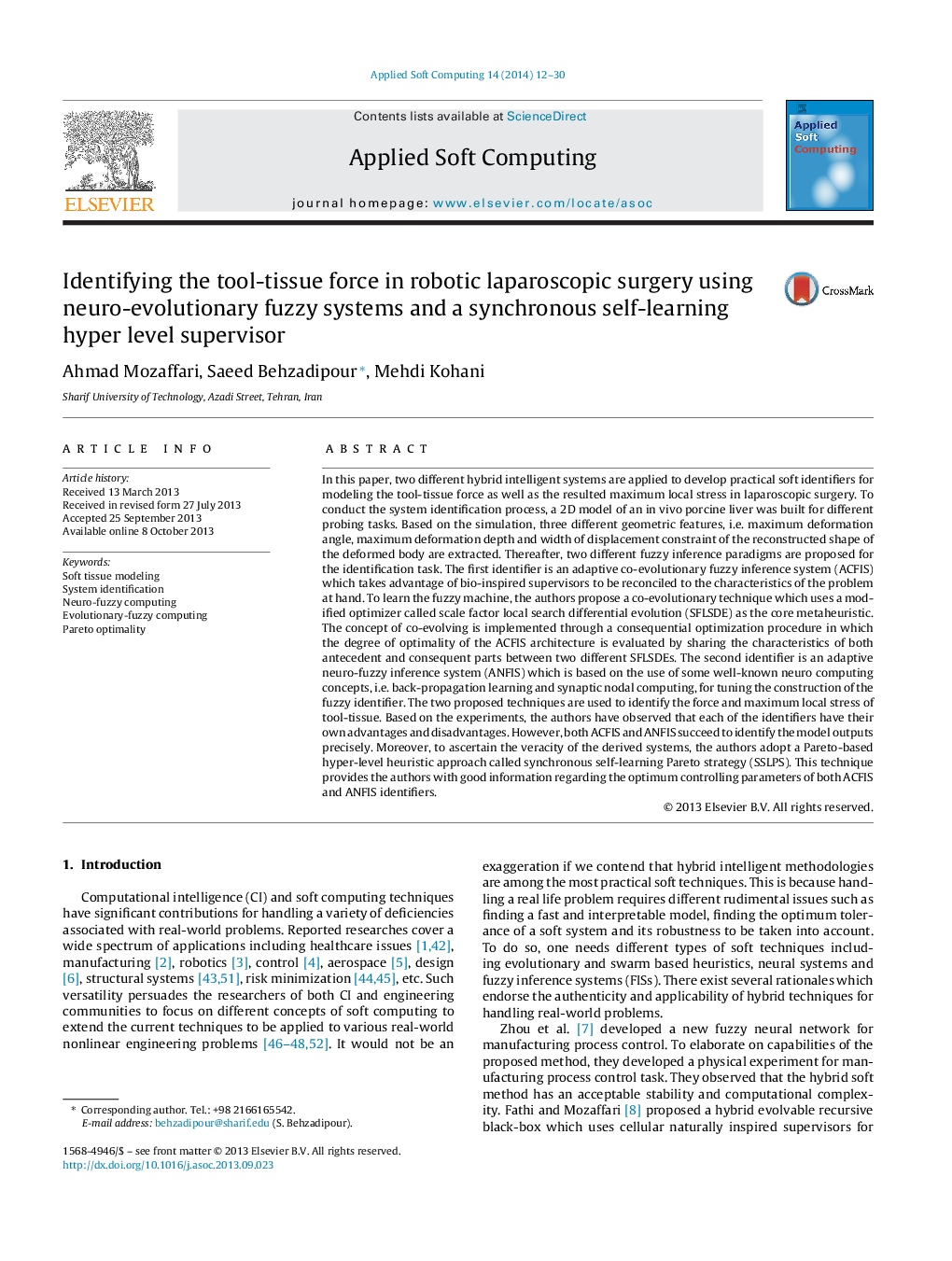| کد مقاله | کد نشریه | سال انتشار | مقاله انگلیسی | نسخه تمام متن |
|---|---|---|---|---|
| 495819 | 862840 | 2014 | 19 صفحه PDF | دانلود رایگان |
• Proposing two novel hybrid intelligent systems.
• Applying the proposed systems to estimation of the tool-tissue force in robotic laparoscopic surgery.
• Evaluating the performance of hyper-level supervision for extracting the optimum architecture of fuzzy systems.
• Conducting a comparative study to elaborate on the authenticity of the proposed methods.
In this paper, two different hybrid intelligent systems are applied to develop practical soft identifiers for modeling the tool-tissue force as well as the resulted maximum local stress in laparoscopic surgery. To conduct the system identification process, a 2D model of an in vivo porcine liver was built for different probing tasks. Based on the simulation, three different geometric features, i.e. maximum deformation angle, maximum deformation depth and width of displacement constraint of the reconstructed shape of the deformed body are extracted. Thereafter, two different fuzzy inference paradigms are proposed for the identification task. The first identifier is an adaptive co-evolutionary fuzzy inference system (ACFIS) which takes advantage of bio-inspired supervisors to be reconciled to the characteristics of the problem at hand. To learn the fuzzy machine, the authors propose a co-evolutionary technique which uses a modified optimizer called scale factor local search differential evolution (SFLSDE) as the core metaheuristic. The concept of co-evolving is implemented through a consequential optimization procedure in which the degree of optimality of the ACFIS architecture is evaluated by sharing the characteristics of both antecedent and consequent parts between two different SFLSDEs. The second identifier is an adaptive neuro-fuzzy inference system (ANFIS) which is based on the use of some well-known neuro computing concepts, i.e. back-propagation learning and synaptic nodal computing, for tuning the construction of the fuzzy identifier. The two proposed techniques are used to identify the force and maximum local stress of tool-tissue. Based on the experiments, the authors have observed that each of the identifiers have their own advantages and disadvantages. However, both ACFIS and ANFIS succeed to identify the model outputs precisely. Moreover, to ascertain the veracity of the derived systems, the authors adopt a Pareto-based hyper-level heuristic approach called synchronous self-learning Pareto strategy (SSLPS). This technique provides the authors with good information regarding the optimum controlling parameters of both ACFIS and ANFIS identifiers.
Figure optionsDownload as PowerPoint slide
Journal: Applied Soft Computing - Volume 14, Part A, January 2014, Pages 12–30
